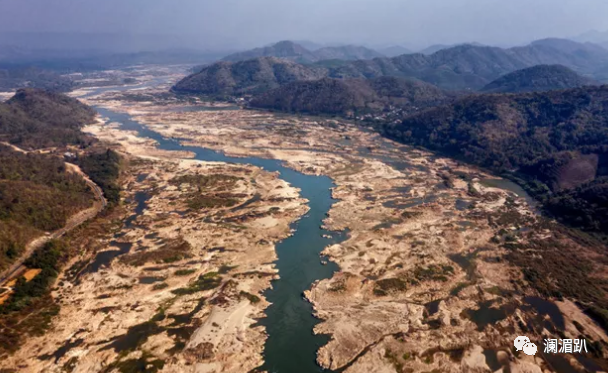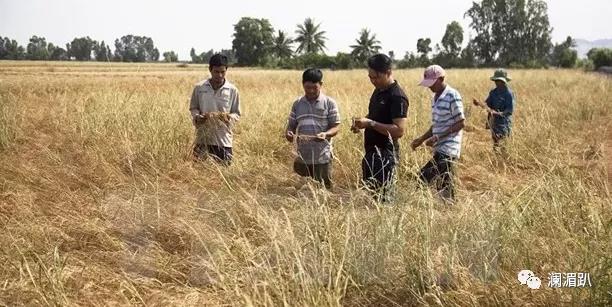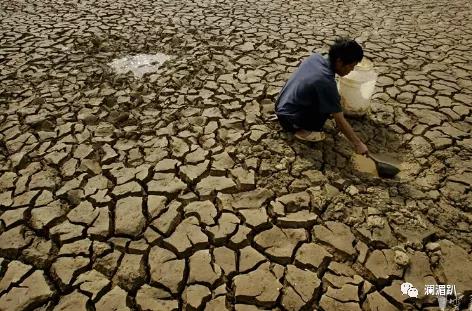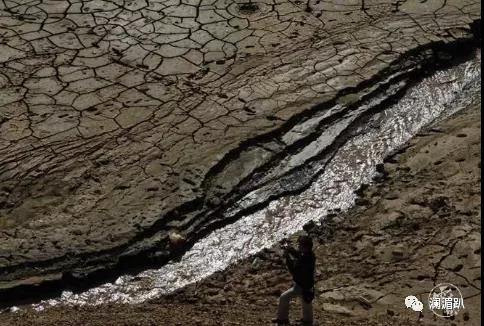At the Chinese Foreign Ministry's press conference on April 21, 2020, a reporter asked: A latest study showed that China's hydroelectric dams on the upper Mekong exacerbated the drought in downstream countries. Could you confirm this and offer a comment? 
January, a Mekong section in Thailand Citing the Mekong’s weekly flood situation reports by the Mekong River Commission (MRC), Chinese Foreign Ministry spokesperson Geng Shuang answered: The MRC Secretariat already made a science-based assessment that the Lancang-Mekong basin experienced sustained dry conditions and lack of rainfall. Reduced precipitation and abnormality in the monsoon combined with an extreme El Niño event became the main cause of this drought. 
Drought in Central Vietnam Indeed, the Lancang-Mekong basin, including China’s Yunnan, has seen reduced precipitation since 2019, causing droughts, drying-ups, fires, and others. And here are pictures of the recent drought in Yunnan: 
According to the provincial water conservancy department, Yunnan has encountered its worst drought in 10 years, due to reduced precipitation. Statistics show that as of April 15, 306,667 hectares of crops were damaged, with 63,000 hectares hit heavily by the drought. Some 100 rivers in the province were cut off, and 180 reservoirs dried up. 1.48 million people and 417,300 large domestic animals faced drinking water shortage. Reservoirs store 6.11 billion cubic meters of water, down by 10 percent year on year. 
Despite this, Geng said, China has been doing its best to guarantee reasonable discharge volumes downstream. On January 24, China increased the discharge of the Lancang River from 850 cubic meters per second to 1,000, so as to relieve downstream drought. Similar deeds are done in the past years. In 2010, Yunnan saw the worst drought in 100 years, and in 2016, the Lancang River flow declined. Even in such times, China showed concerns over countries downstream, providing urgent aid for difficulties. In the fifth Lancang-Mekong Cooperation (LMC) foreign ministers' meeting in February this year, State Councilor and Foreign Minister Wang Yi announced the decision to positively consider sharing year-round hydrological data with Mekong countries. China will work with Mekong countries to address challenges brought by climate change, floods and others. 
The six countries are like one family. Geng Shuang pointed out that the study mentioned by the reporter was published in the New York Times on April 13. The groundless report runs counter to facts. 
In October 2019, the Chinese version of the New York Times web portal posted a comment, saying that the Chinese hydropower projects would kill the Mekong River. On April 13, 2020, the same website posted another article, say "China restricts the flow of the upper Mekong River and causes droughts in downstream countries." However, the Mekong River Commission (MRC) clarified the fallacies. Established 15 years ago, the MRC is an intergovernmental organization, with its members being Cambodia, Laos, Thailand, and Vietnam. Embracing science-based assessments, the MRC repeated the downstream droughts have little to do with Chinese dams. 
In an interview, Jeremy Bird, former CEO of the Mekong River Commission, said they had a simulated study over the Mekong River flows with or without dams. The analytic reports concluded that the drought in the Mekong River basin has nothing to do with the dams in China. The drought is caused by extreme weather and reduced rainfall. The study results are consistent with those by Chinese experts: 1. The Lancang River only accounts for 13.5% of the Mekong runoff, 86.5% of which comes from other tributaries outside China. 2. Extreme weather cuts rainfall in the Mekong River basin outside China, resulting in the drop of water level. 3. The cascade hydro projects on the Lancang River in China do not consume much water. The finished reservoirs cover small areas, with limited evaporation. So it is groundless to say dams in China cause drops or drying-ups of the Mekong. 
Originating in Qinghai province, northwest China, the Mekong River rushes southward through Laos, Myanmar, Thailand, Cambodia, and Vietnam. It empties into the South China Sea. As a Mother River cared by all, the ever-lasting Mekong sustains livelihood of the people in the region, and it is now a major water way for trade among China, ASEAN and South Asia. Therefore, the upstream China has consulted with downstream countries in eco-protection along the Mekong River. Facts show that China has put eco-protection first in exploiting natural resources. It is a universally-accepted practice in China that development is not at the cost of environment. Chinese people have embraced the philosophy of “lucid waters and lush mountains are invaluable assets.” By Gateway reporters
|













7740f3b5-9ecb-438e-9052-76cb2d4bb671.jpg)

